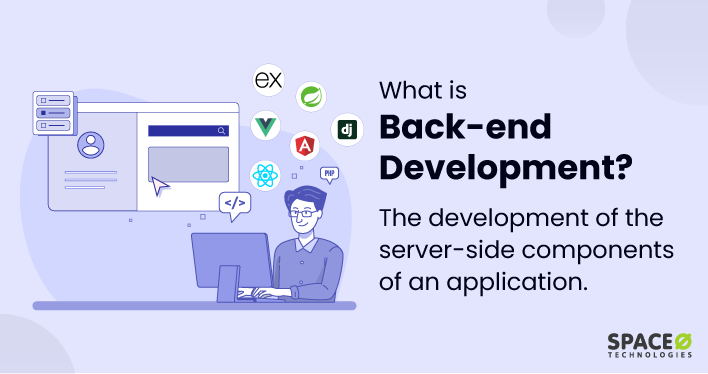News Blast: Your Daily Update
Stay informed with the latest news and trends.
Back-End Development: Where the Magic Happens Behind the Curtain
Uncover the secrets of back-end development and see how the magic powers your favorite websites. Dive in and learn what happens behind the curtain!
Understanding APIs: The Backbone of Back-End Development
Understanding APIs is crucial for anyone delving into back-end development, as they serve as the vital links between different software applications. An API, or Application Programming Interface, allows various services and applications to communicate with one another, streamlining processes and enhancing functionality. By defining methods for exchanging data, APIs enable developers to build complex systems while focusing on specific features rather than reinventing the wheel. The importance of APIs in back-end development cannot be overstated, as they facilitate the integration of multiple services, from payment gateways to social media platforms, creating a cohesive user experience.
In back-end development, APIs can be categorized into several types, including RESTful, SOAP, and GraphQL. Each of these types has its own advantages and use cases, but they all share a common goal: enabling seamless communication between different software services. For example, RESTful APIs are known for their simplicity and efficiency, making them popular for web and mobile applications. Meanwhile, GraphQL provides a more flexible approach, allowing clients to request precisely the data they need. Understanding these different types of APIs is essential for developers aiming to create robust, scalable applications that meet user demands effectively.

Databases 101: How Back-End Development Manages Data
Databases are the backbone of modern web applications, serving as organized collections of data that back-end developers manage and manipulate. They enable applications to store, retrieve, and process information efficiently. At the core of proper back-end development lies the understanding of how databases function, which includes the various types of databases such as relational, NoSQL, and in-memory databases. By leveraging structured query language (SQL) for relational databases or query APIs for NoSQL databases, developers can execute operations like inserting, updating, and deleting data with ease.
Effective data management through back-end development ensures data integrity and security, vital for building trust with users. A well-designed database schema allows for efficient querying, which can significantly enhance application performance. Moreover, learning about database relationships—like one-to-many or many-to-many—further enriches a developer's ability to architect robust systems. As businesses increasingly rely on data-driven decision-making, understanding the essential role of databases in back-end development becomes crucial for any aspiring developer.
Common Back-End Development Frameworks: Which One is Right for You?
When it comes to back-end development frameworks, choosing the right one can significantly impact the efficiency and performance of your web application. Each framework offers unique features and benefits suited for different types of projects. For instance, Node.js is praised for its non-blocking, event-driven architecture, making it an excellent choice for real-time applications. On the other hand, Django, a Python-based framework, is known for its rapid development capabilities and robust security features, making it suitable for building complex data-driven websites.
To further narrow down your choices, consider the following factors:
- Project Requirements: Evaluate the specific needs of your application, such as scalability and performance.
- Development Speed: Some frameworks allow for faster development processes, which is crucial for projects with tight deadlines.
- Community Support: A strong community can provide valuable resources, plugins, and support for troubleshooting.
- Learning Curve: Complexity can vary, so choose a framework that aligns with your team's skills.